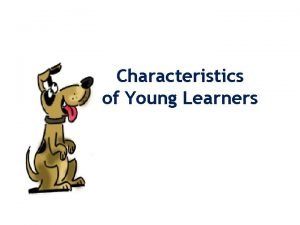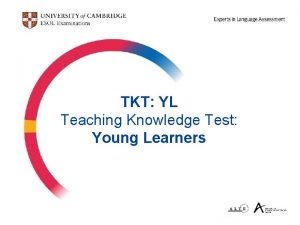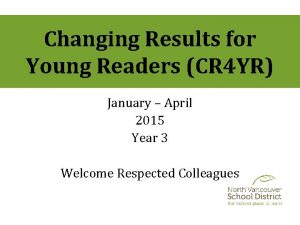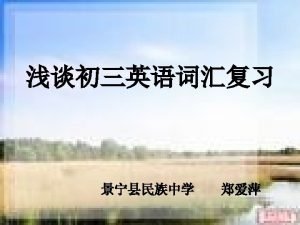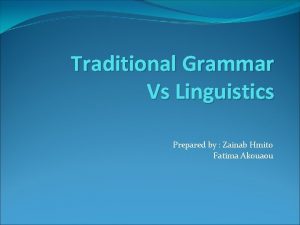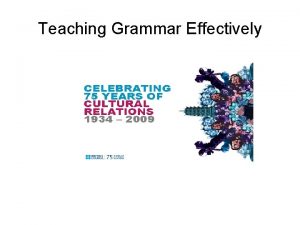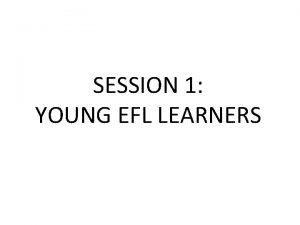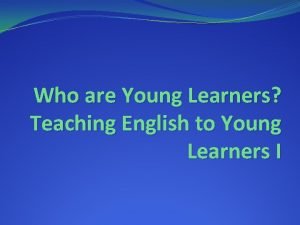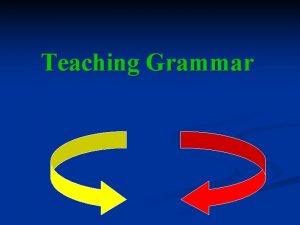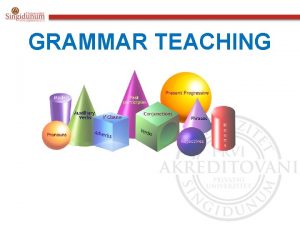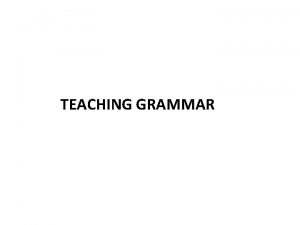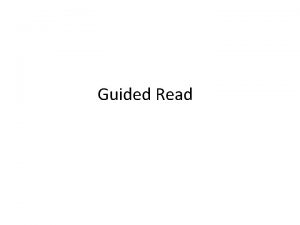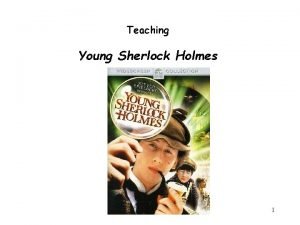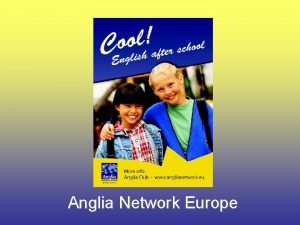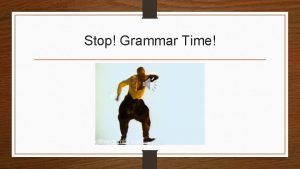SESSION 4 Teaching Grammar to Very Young Learners
















- Slides: 16

SESSION 4: Teaching Grammar to Very Young Learners

Let’s Review! How do children learn? With a partner come up with 3 things you remember about how children learn.

How children learn • Children are active learners and thinkers. (Piaget, 1970) • Children learn through social interaction. (Vygotsky, 1962) • Children learn effectively through scaffolding by adults. (Bruner, 1983)

Language learning environment L 1 environment L 2 environment • Language highly contextualized • Language used is authentic • Learner is highly motivated • Language more decontextualized • Language used more artificial • Learners may not be highly motivated Language learning environment

Goal for young learner environment • Learning should be meaningful, purposeful, and relevant to your young learners. • Try to imitate the L 1 learning environment

Poll Question How important is it to teach young learners about English grammar? • Very important • Somewhat important • Not very important • Not important at all

Answer: It’s very important! But, your approach to teaching grammar should match how children learn languages.

How children learn language …children see the foreign language ‘from the inside’ and try to find meaning in how the language is used in action, in interaction, and with intention, rather than ‘from the outside’ as a system and form. Cameron, 2003

Approach to grammar • Learning-centered grammar teaching (Cameron, 2001) • Meaning-focused input (Pinter, 2006) • Grammar is “noticed” (Cameron, 2001; Pinter, 2008) “Learning grammar is a messy process requiring the teacher to provide lots of meaningful practice, recycling, and guidance in attending to language form. ” ~ Pinter, 2006

Teaching approaches for YLs Based on learning styles of children… • Promote active learning • Encourage social interaction • Scaffold students’ learning Based on how children learn language… • Take a learner-centered, meaning-focused approach to grammar

Grammar approach for young EFL learners Create an English speaking environment in your class! • Try to imitate the L 1 environment! • Make learning meaningful! • Avoid teaching grammar explicitly! • Make English fun!

TEACHING DEMONSTRATION: The Weather Song

The Weather Song What’s the weather? What’s the weather like today? Tell us (student name) What’s the weather? What’s the weather like today? Is it sunny? Is it cloudy? Is it rainy? Is it snowy? Is it windy? What’s the weather like today?

Weather Song Demonstration Activities to teach song: 1. Picture Cards: Teach vocabulary words using picture cards showing sunny, cloudy, rainy, snowy, and windy. 2. Gestures: Have students choose the gestures for sunny, cloudy, rainy, snowy, and windy. 3. Teach Song: Teach song through repetition, using the gestures. (Sing multiple times adding a different student name each time). 4. Word Card Activity: • Give students large word cards (with What’s, the, weather, like, today) to put in order and make a sentence. • Ask students to hold up the word card when they hear it in the song.

Word Card Activity • Choose five students to come to the front of the class. • Give each of them a word card, and tell them to make a sentence. • After students line up, ask them to show their word card to the class. Have students read the sentence out loud. • Ask students if the sentence is correct and complete. • Cue them to add a question mark (choose a child to be the question mark!). • Ask each student with a word card to hold up their card when they hear their word. Practice by saying each word out loud. When they understand, sing the song again with the class. Be sure students hold up the card in the right place.

References Bruner, J. (1983). Child’s talk: Learning to use language. Oxford, UK: Oxford University Press. Cameron, L. (2001). Teaching languages to young learners. Cambridge, UK: Cambridge University Press. Cameron, L. (2003). Challenges for ELT from the expansion in teaching children. ELT Journal, 57(2), 105 -112. Piaget, J. (1970). The science of education and the psychology of the child. New York, NY: Oxford University Press. Pinter, A. (2006). Teaching young language learners. Oxford, UK: Oxford University Press. Vygotsky, L. (1962). Thought and language. Cambridge, MA: MIT Press.
 How to teach grammar to young learners
How to teach grammar to young learners Teaching young learners english
Teaching young learners english Characteristics of attention
Characteristics of attention Tkt yl sample test
Tkt yl sample test Changing results for young learners
Changing results for young learners Advantages of remedial teaching
Advantages of remedial teaching It is a very shallow skillet with very short sloping sides
It is a very shallow skillet with very short sloping sides Very bad to very good scale
Very bad to very good scale Quantifiers for milk
Quantifiers for milk Used to express very large or very small numbers
Used to express very large or very small numbers Fewfew
Fewfew Without grammar very little can be conveyed
Without grammar very little can be conveyed Without grammar very little can be conveyed
Without grammar very little can be conveyed Left linear grammar to right linear grammar
Left linear grammar to right linear grammar Unrestricted grammars
Unrestricted grammars Traditional school of linguistics
Traditional school of linguistics Right linear grammar
Right linear grammar


